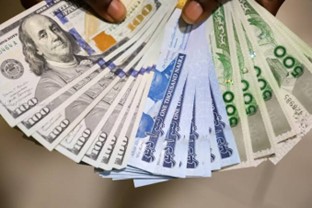The Nigerian naira reached its strongest position in four months, trading at N1,518 per dollar on the official market as improved foreign exchange liquidity and Central Bank interventions bolstered investor confidence.
Monday’s 0.74 percent appreciation marked the naira’s best performance since March 14, 2025, when it closed at N1,517.93 per dollar. The currency’s recent rally reflects successful monetary policy interventions and increased market stability following months of volatile trading.
Central Bank of Nigeria data shows sustained improvement in foreign exchange supply, with the apex bank’s $50 million market intervention last week contributing to reduced demand pressures. The CBN’s successful Open Market Operations auction, which attracted significant foreign investor interest, further strengthened market confidence.
Market analysts at Anchoria Limited project the naira will maintain stability within the N1,515-N1,535 range this week, supported by continued CBN interventions and exporter inflows. The stable trading environment represents a significant improvement from the extreme volatility experienced in early 2024.
“These actions have helped ease demand pressures and boost market confidence, keeping volatility low,” Anchoria Limited stated in its market analysis. “We expect the naira should stay stable, supported by CBN supply and exporter inflows.”
The CBN’s recent OMO auction offered N600 billion across two tenors, with total subscriptions reaching N2.17 trillion and final allotments of N1.25 trillion. The 363-day instrument settled at 21.99 percent, indicating strong investor appetite for naira-denominated assets.
Cowry Assets Management attributed the positive momentum to “CBN intervention, FX reforms gaining traction, and steady oil export revenues,” noting that these factors are “gradually laying the groundwork for currency recovery and improved market sentiment.”
The parallel market showed similar improvement, with the naira trading at N1,540 per dollar, indicating convergence between official and unofficial exchange rates. This narrowing spread suggests improved market efficiency and reduced arbitrage opportunities.
CardinalStone’s analysis emphasizes that current interventions differ from previous unsustainable exchange rate defenses, with monthly interventions averaging $786.58 million compared to pre-COVID levels of $2.30 billion monthly.
